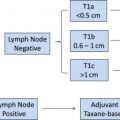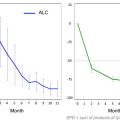The results from the UPMC Cancer Center’s experience with Via Pathways and those reported by other pathways programs suggest that these are effective models for improving quality, reducing unwarranted variability in care, and reducing the rate of growth in the cost of cancer care. A robust pathways program that reduces unwarranted variability can serve as the vehicle to improve the value of cancer care to patients, payers, and providers through increasing quality and decreasing costs. Oncologists must take an active role in defining and implementing cost-effective care for patients, payers, and referring physicians.
Key points
- •
Experience at UPMC CancerCenter and other institutions suggest that adoption of clinical pathways programs can improve quality, reduce unwarranted variability and reduce the growth rate of cancer costs.
- •
A robust pathways program can serve as a vehicle for demonstrating the value of an institution’s cancer care to key stakeholders such as payers, referring physicians and patients.
- •
An effective program must engage the practicing oncologists in the development and implementation of the clinical pathways.
Overview
Cancer care in the United States faces several key challenges today that are causing payers, referring physicians, and patients alike to question the value of the care, both in terms of outcomes and costs. New technologies in the form of pharmaceuticals and biologics, prognostic tests, and new radiation therapy tools and techniques offer the promise of improved outcomes but their cost-effectiveness is often unclear. Oncologists themselves are caught in the middle because they are prescribers of such technologies and often the entity billing for such services but with limited ability to impact the pricing models for these services. Finally, as the complexity of oncology care continues to increase because of the advances in the understanding of the pathogenesis of the many subtypes of cancer, the community-based oncologist who cares for patients with all cancer subtypes is confronted with maintaining an up-to-date knowledge base that is expanding rapidly. Although no single solution exists for solving these issues in cancer today, the experience at the University of Pittsburgh Medical Center (UPMC) has demonstrated that a clinical pathways program imbedded in a point-of-care, patient-specific, Web-based decision support tool can reduce unwarranted variability, drive adherence to evidence-based medicine, and, in the process, reduce the growth rate in the total cost of cancer care. By prioritizing the right care for the right patient presentation and reducing the use of therapies without demonstrable incremental value, oncologists using a clinical pathways program can provide a better solution to the rising costs of cancer than more blunt approaches such as rate reductions or prior authorization programs. Recent articles in the ASCO Post and JNCCN point, respectively, to the growing acceptance and adoption of clinical pathways as a tool for managing the costs of cancer care. These articles also highlight the challenges including the need for transparency and diligence to ensure quality is not inadvertently compromised for the sake of cost reductions. Numerous other articles and surveys published over the last few years similarly cite the pathways trend in oncology and its promise for improving the value of cancer care.
Overview
Cancer care in the United States faces several key challenges today that are causing payers, referring physicians, and patients alike to question the value of the care, both in terms of outcomes and costs. New technologies in the form of pharmaceuticals and biologics, prognostic tests, and new radiation therapy tools and techniques offer the promise of improved outcomes but their cost-effectiveness is often unclear. Oncologists themselves are caught in the middle because they are prescribers of such technologies and often the entity billing for such services but with limited ability to impact the pricing models for these services. Finally, as the complexity of oncology care continues to increase because of the advances in the understanding of the pathogenesis of the many subtypes of cancer, the community-based oncologist who cares for patients with all cancer subtypes is confronted with maintaining an up-to-date knowledge base that is expanding rapidly. Although no single solution exists for solving these issues in cancer today, the experience at the University of Pittsburgh Medical Center (UPMC) has demonstrated that a clinical pathways program imbedded in a point-of-care, patient-specific, Web-based decision support tool can reduce unwarranted variability, drive adherence to evidence-based medicine, and, in the process, reduce the growth rate in the total cost of cancer care. By prioritizing the right care for the right patient presentation and reducing the use of therapies without demonstrable incremental value, oncologists using a clinical pathways program can provide a better solution to the rising costs of cancer than more blunt approaches such as rate reductions or prior authorization programs. Recent articles in the ASCO Post and JNCCN point, respectively, to the growing acceptance and adoption of clinical pathways as a tool for managing the costs of cancer care. These articles also highlight the challenges including the need for transparency and diligence to ensure quality is not inadvertently compromised for the sake of cost reductions. Numerous other articles and surveys published over the last few years similarly cite the pathways trend in oncology and its promise for improving the value of cancer care.
Historical and current factors driving UPMC to develop and use clinical pathways
By 2004, UPMC CancerCenter (UPMC-CC) had expanded to approximately 40 sites of service in a 100-mile radius in Western Pennsylvania. Concerns over the consistency and quality of care across such a diverse network were validated through the results of internal surveys (internal UPMC unpublished data, 2004) that demonstrated wide variability in approaches to cancer care. Pressures and concerns from the large payers in the region were also driving an imperative to collaborate around a solution to containing the rising costs. Additionally, with the University of Pittsburgh Cancer Institute as its National Cancer Institute–designated cancer center, UPMC-CC needed tools for increasing awareness of, and accrual to, clinical trials. The solution for all of these needs was the development and implementation of the Via Pathways to improve quality, ensure consistency of care, reduce hospital admissions, and reduce the total cost of care. The program has served UPMC-CC well for more than 8 years to date and is now a key foundation for UPMC’s overall accountable care strategy.
Differences between Via Pathways and guidelines
Although excellent sources of oncology guidelines exist today, adherence to these guidelines is more difficult to assess, especially in community-based oncology practice, where more than 80% of cancer care is delivered. A recent analysis by IntrinsiQ of their dataset of more than 17 000 patients per month suggests that, for non–small cell lung cancer, adherence to guidelines is 100% for first-line therapy but only 60% for second- and third-line therapy (personal e-mail correspondence with IntrinsiQ [Ed Kissell], September 2009). Even within guidelines, case studies routinely collected through physician surveys by reputable third parties suggest that a significant amount of unexplained variability exists, in large part because of the inclusive nature of multiple options as standards of care. Case study surveys conducted in 2005 within the UPMC-CC revealed a significant amount of variability within guidelines that could not be easily explained. No one will dispute that cancer is a very complex disease, and the nature of decision making depends highly on physician judgment for each unique patient. However, experiences in other fields of business suggest that oncology care will benefit from a certain level of standardization for most clinical presentations (eg, pathways).
Development and maintenance of the Via Pathways
Starting in 2005, UPMC-CC developed and maintained algorithms (Via Pathways) for oncology clinical decision making that UPMC-CC physicians use to inform their decision making for any given state and stage of cancer. This development and maintenance has been time intensive and has involved the mutual cooperation of most of the academic and clinical experts at UPMC-CC as well as numerous physicians from other academic- and community-based practices.
A physician committee exists for each major disease category (eg, colorectal; see full list later) and is led by 2 chairpersons: an academically based oncologist specializing in that disease and a community-based oncologist with a background and patient concentration in that disease. The committees convene quarterly to review new clinical literature, pathway results, and the appropriateness of the granularity of the algorithms (eg, defining the states and stages of disease and unique patient scenarios at which decisions should be made). Through their collaborative work, a single best treatment of most of the clinical scenarios in oncology care is defined. These best treatments are based on reviewing the literature in a consistent decision hierarchy. First, the committees look for the most effective treatment based on the existing literature. In cases when there is a single best (most effective) treatment, that becomes the Via Pathway for that case. However, if there is more than one treatment with comparable efficacy, then the committee looks for the least toxic therapy with the goal of maximizing patient quality of life and outcomes and minimizing unnecessary costs of toxicity management, such as hospitalizations. Finally, if there is more than one treatment with comparable efficacy and toxicity, the committees look for the least costly alternative to reduce unnecessary health care expenditures without compromising clinical benefits.
In addition to a single best therapy as the primary pathway, the committees will include options for common scenarios, such as neuropathy, poor performance status, drug shortages, and so forth. However, such options are only presented and counted as on pathway when the physician notes the specific scenarios. For those less frequently occurring patient scenarios not addressed by the pathway, it is anticipated and expected that physicians will choose a treatment off pathway . There is no penalty for such decisions; in fact, adherence rates approaching 100% would be concerning. The expectation of Via Pathways’ disease committees is adherence rates in the 70% to 80% range overall.
The following table delineates the current diseases and specialties covered by the Via Pathways, with each having a separate physician disease committee.









